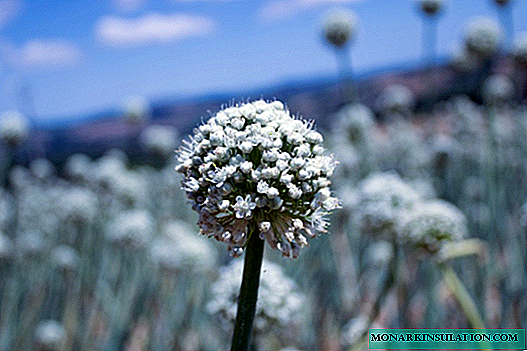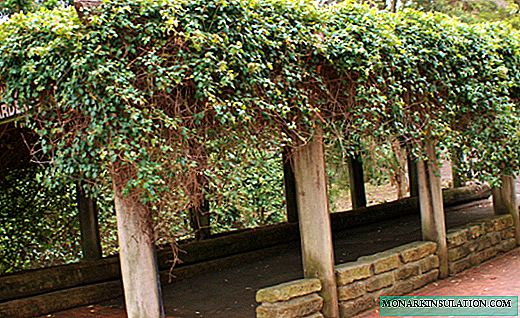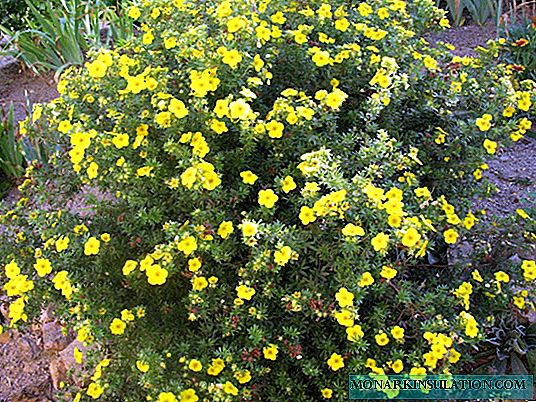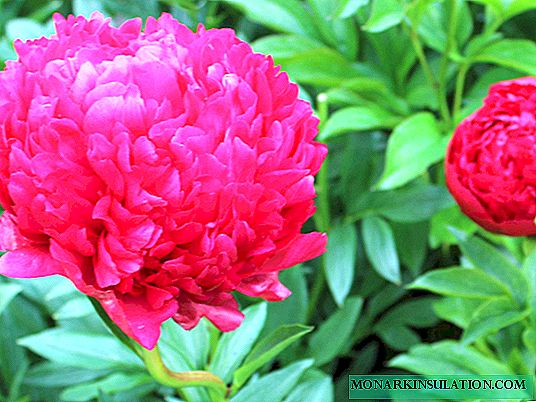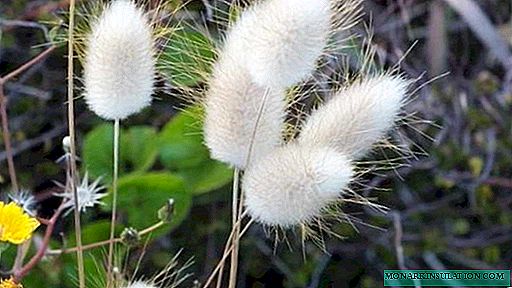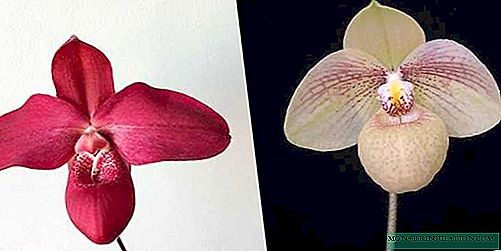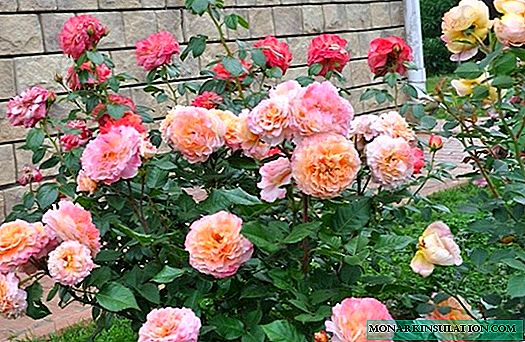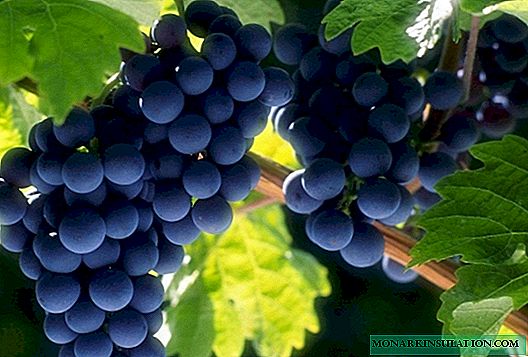
There are many grape varieties, including those bred specifically for the difficult climatic conditions of Russia. Nevertheless, not all varieties combine such advantages as good winter hardiness, high productivity and long shelf life. If you are interested in these qualities, you should pay attention to the late table grapes of Moldova, which, with proper care, will yield a huge crop of large and juicy, albeit slightly sour berries.
History of Moldova cultivation
The Moldova grape variety appeared through the efforts of scientists from the Moldavian Research Institute of Viticulture and Winemaking for quite some time - in 1974. The "parents" of Moldova are the varieties Guzal Kara and Save Saillar 12-375. Since 1975, the new variety has passed state tests. In 1986, Moldova grapes were included in the state register and recommended for cultivation in the North Caucasus and Lower Volga regions. At the moment, it is widely grown both in Russia and in Ukraine. The variety has an alternative name - Late Kodryanka.
Grade description
Moldova belongs to the late table varieties. 160-165 days elapse from the moment the buds open to ripen, so grapes sometimes do not have time to ripen completely in cold regions. Bushes are characterized by intensive growth. The vines are covered with large, almost not dissected leaves, the lower surface of which is covered with weak bristly pubescence. Moldova blooms with bisexual flowers, so pollinating varieties are not required.

Grapes are covered with a dense wax coating.
Bunches are most intensively formed at 5-6 nodes, counting from the base of the vine. Large clusters (on average 400-600 g, up to a maximum of 1 kg) grow on a stalk 4-5 cm long and have a cylindrical shape, sometimes with "wings". The structure of the brushes is loose. Large (up to 6 g) oval berries are covered with a thick dark purple (sometimes almost black) skin with a dense waxy coating. Inside each berry is hidden 2-3, occasionally 4 seeds. The pulp has a dense, slightly cartilaginous structure. The taste does not have any features, in the stage of technical ripeness is quite sour. The content of ascorbic acid in the juice is quite high (8-9 g / l), while sugars have 18-19%. During storage, acidity gradually decreases, palatability improves.
Variety Moldova - video
Variety Characteristics
Moldova grapes have a number of advantages that explain its popularity among gardeners:
- rapid entry into fruiting (2-3 years after planting);
- high productivity (up to 4 kg from 1 m2 vineyard, up to 150 kg from 1 bush at the age of 8-10 years, up to 165 kg per 1 ha);
- good transportability and durability;
- medium resistance to defeat by mildew and gray rot, rarely affected by phylloxera;
- average winter hardiness (withstands frosts down to -22 aboutFROM);
- good ability to regenerate.
The disadvantages of the variety:
- easily affected by the optimum;
- a significant reduction in storage and transportability in case of untimely harvesting;
- decrease in crop quality with underload or overload of the bush.
Features of planting and growing grapes Moldova
To get well-developed bushes, you need to choose the right soil. Grapes do not like excessively moist soil, grows worse and is more often affected by fungal diseases. If groundwater lies close to the surface in your area, drainage must be provided.
The bushes require good lighting and a lot of heat, so it is advisable to place them on the south side of the garden. Stagnation of cold air and strong winds adversely affect the development of the plant. This must be taken into account when choosing a place and provide the bush with the necessary protection.
Landing rules
Like fruit trees, grapes are planted both in spring and autumn. You can plant at an air temperature of at least +15 aboutC, and soils + 10 ... +11 aboutFROM.
When planting in autumn, you need to remember that at least a month should remain before frost, and a young bush needs to be properly covered for the winter.
Many gardeners prefer to plant grapes in the spring, so that the grapes take root by autumn - this will make it easier to winter.
Moldova is suitable for planting on its own roots, as well as for grafting on an adult bush stock.
If you want to vaccinate, the lower part of the cuttings is cut with a wedge several millimeters from the lower eye and immersed in water for 24 hours. The old rootstock is cleaned of dirt and jagged, the stalk is grafted into a split and tightly pulled together with a strip of strong fabric.
Vaccination of grapes in shtamb - video
When purchasing a finished seedling, check its root system. Do not take planting material with dried or sluggish roots.

The cutlery must be put in water so that it takes root
Sapling (chubuk with roots) can be prepared independently. For this, the cut stalk is placed in water and waiting for the roots to appear in white. You can plant the roots to plant the stalk in a flower pot with moist nutrient soil. Before planting, the stalk can be dipped in a solution of Humate - this increases the survival rate of the seedling.

You can prepare beautiful seedlings by planting grape cuttings in a container with a nutrient substrate
Prepared seedlings are planted in pre-prepared pits with a depth of 60-70 cm and a diameter of 90-100 cm. The bottom of the pit is loosened with a pitchfork, covered with 2/3 of the nutrient mixture from humus or other organics and horse soil. This layer is sprinkled with a thin layer of soil. Carefully seedling (young roots are very brittle) put in a hole and fall asleep in the soil. After planting, the plant needs to be watered with 2-3 buckets of water and the surface of the soil mulled by peat. It is advisable to tie a seedling to a peg.

When planting grapes in waterlogged soil at the bottom of the pit, you need to pour a thick layer of drainage material
The distance between adjacent bushes of grapes should be at least 3.5 - 4 m, row spacing - 5 m.
Grape care
Variety Moldova is prone to thickening, in which there is a fading of berries and a decrease in yield. So to obtain high-quality crops, the bushes must be cut, and also regularly watered and fed.
Watering
Although Moldova does not like waterlogging, it needs constant watering so that the soil is constantly moist. Therefore, unlike other varieties, which are sufficient to be watered 2-3 times per season, Moldova needs to be watered at least 1 time per month, and even more often in case of heat and drought. The frequency of irrigation is regulated depending on the condition of the soil (when it dries, another watering is necessary). To avoid overmoistening, it is advisable to dig out drainage ditches to drain excess water.
Top dressing
Organic fertilizers and a standard set of minerals - nitrogen, potassium, phosphorus, are optimally suitable for feeding grapes.
Fertilizers are applied 3-4 times per season, preferably with watering. In the spring, nitrogen compounds are introduced; in the summer, potassium and phosphorus are added. Organics are recommended to be introduced only in late autumn every 2-3 years. With the spring application of organic substances, the taste of berries may deteriorate.
Pruning
Grape pruning is carried out every year in spring or autumn. It is important to carry out the operation during the dormant period - before the buds open or after the leaves fall. Pruning starts from the top shoot. On each vine you need to leave 7-9 eyes, and when forming a high-stem bush, 4-6 eyes. In total, no more than 70 buds should remain on the bush. Subsequently, if a lot of clusters are formed, you need to normalize the crop in order to avoid overloading the bush. On each shoot, it is advisable to leave 1-2 clusters.

For winter, you need to cut off unripe shoots
In addition to forming pruning, it is necessary to remove dried and too thin shoots, and in the fall to cut off non-lignified vines.
Shelter for the winter
Moldova's winter hardiness is pretty good, but if there are frosts in your region more than -23 aboutC, then winter will require shelter. After the autumn pruning, the vines are tied together, bent to the ground and covered with hay, film or geotextile.

To preserve the bushes from freezing, it is advisable to lower them to the ground and cover with a film on top
If the bushes do not take shelter for the winter, it is necessary to mulch the soil in a radius of 1-1.5 m from the trunk with a sliver or peat before the onset of cold weather. In spring, mulch must be removed.
Treatment against diseases and pests
Moldova has good resistance to mildew and other diseases, but it can be affected by oidimum. This disease greatly affects the quality of the crop, so it is advisable to carry out preventive treatments with a Bordeaux mixture (1: 100 ratio) or other copper preparations. The first treatment is carried out 7-10 days before flowering, the second - after the formation of brushes. For processing, Bordeaux liquid is most often used.
Of the pests, grapes are only afraid of wasps, but this does not apply to Moldova - by the time the wasp crop ripens, it practically does not happen.
Harvesting, storage and use of crops
Typically, Moldova ripens in September. Harvested in the morning using a pruning shears. Brushes are preferably tightly packed in boxes. Thanks to the thick skin, the grapes are well stored and tolerate transportation.
Grapes of Moldova at full ripening - video
Grapes can be stored in a cool room for 2-3 months or even longer. Clusters are preferably hung on ropes or trellises; a small potato can be put on a cut of a leg to reduce drying.
Part of the crop can be left on the bush until frost, but you need to keep in mind that such grapes are stored worse.
When picked up, Moldova is quite sour, but then during storage it gains sweets. It can be used fresh for making raisins and wine.
Reviews
Moldova is in itself one of the most acidic grape varieties. They do not even let him into wine, for such an acidic wine is only for an amateur. Those. even if Moldova is ripening (a lot of sugar has accumulated), then there is still a lot of acid in it. And after fermentation, when all the sugar is fermented, this acid remains.
rondo//otvet.mail.ru/question/95590818
I will never understand what is good in Moldova. I tried it with different people, it’s the same everywhere. Why rush with it, "wait until it ripens" if you can plant varieties that work well in any year and which you do not need to wait? I understand that if in Moldova there were some unique flavoring shades that can be fought for, which appear when ripe, like Citron Maragach’s got citron notes ... But Moldova has nothing so cool ...
Vadim from Rostov//www.vinograd7.ru/forum/viewtopic.php?p=29284#p29284
Moldova, one bush, vaccination on the old roots of Lydia in the split, vaccination 4 years. I hold for two reasons: the neighboring guys are not very trying on berries and for storage of dark berries so far the best.
Evgeny Anatolyevich, Stavropol Territory//forum.vinograd.info/showthread.php?t=739
Especially in the South there are not enough good late varieties. When all the grapes have already been eaten .... I want ... So Moldova is stored and hangs well on the bush. They trade it almost until the new year! This is great.
Andrey Viktorovich//www.vinograd7.ru/forum/viewtopic.php?f=61&t=147&start=270
Of course, there are other late varieties, only their efficiency is far from Moldova, in 2016, in markets, in shops, I did not find anything better than Moldova, sweet with its acidity (it’s hard even to call acidity)
Vardan, Krasnodar//www.vinograd7.ru/forum/viewtopic.php?f=61&t=147&start=270
In the conditions of my site, Moldova is wonderful. Even in 2008, an adverse year for viticulture, nothing was left for storage - they ate everything. I have experience growing it both on the arbor and on the trellis. On the trellis it really ripens later, where the growth force is obtained more. Even for aging, it must be normalized, because on one shoot gives up to 4 inflorescences. I leave the lower inflorescence, remove the rest - so on 3-4 shoots and replacing barren. I wish you all success in growing Moldova!
Andrew, Yuzhnoukrainsk//forum.vinograd.info/showthread.php?t=739
Table grapes Moldova is perfect for growing in the Russian climate. The variety is very easy to care for and yields excellent yields. You only need to regularly trim the bushes and regularly feed and water them. No need to be afraid of the sour taste of berries - during storage they gain sweetness.

